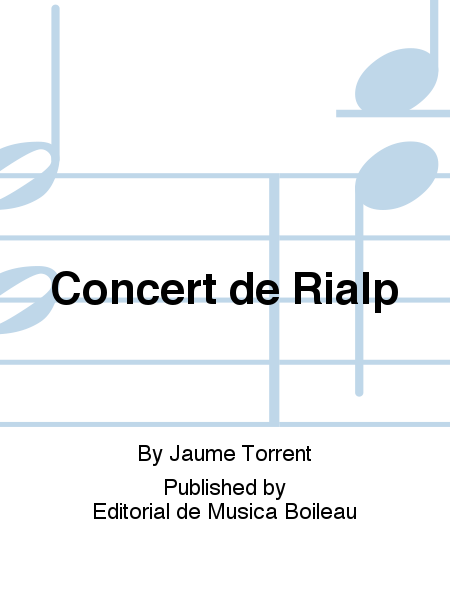Concert de Rialp
-
Ships in 4 to 6 weeks
Details
Description
SKU: BO.B.3610
Composed by Jaume Torrent. Published by Editorial de Musica Boileau (BO.B.3610).The concerto establishes a dialogue which alternates constantly between the guitar and the symphony orchestra, with the two sound worlds being maintained in perfect balance while also exploring the unique possibilities presented by each: the guitar develops a surprising array of resources which enhance its expressive capacity to the utmost, while the orchestra envelops it in an extensive range of textures which at times give rise to subtle tones, and at others, all the tonal vigour of the tutti.
The language I employ is intended as a means of achieving an efficient symbiosis between modernity and tradition, continuing in the line of my previous works as a composer. It contains no references to popular music and at all times veers away from the expectations created by the language of folklore exploited in concertos of this kind by the majority of recognised composers. In Concerto de Rialp, modernity is reflected through a search for unique expressive forms, experimentation with new means of thematic development and a unique presentation of formal solutions, all the while, however, respecting expressiveness and lyricism as the foundations of communicating with the audience.
The concerto also explores the guitar's new technical resources. Thanks to specific work on left hand extensions, mechanical formulas have been developed which allow certain scales to be played at unprecedented speeds. In the cadenza of the first movement, the guitar develops the main theme in the form of an instrumental motif that has never been used before in guitar scores, producing a polyphonic effect of new dimensions.
I have worked to exploit the distinctive sound differences existing between the guitar and the orchestra -both from the dynamic and the tonal points of view- in order to really develop the dramatic effect that their being brought together affords. In the second movement -calmo assai- this dramatic quality is expressed in a way that is particularly powerful by means of a tension never before achieved in a concerto for guitar and orchestra.

 Share
Share